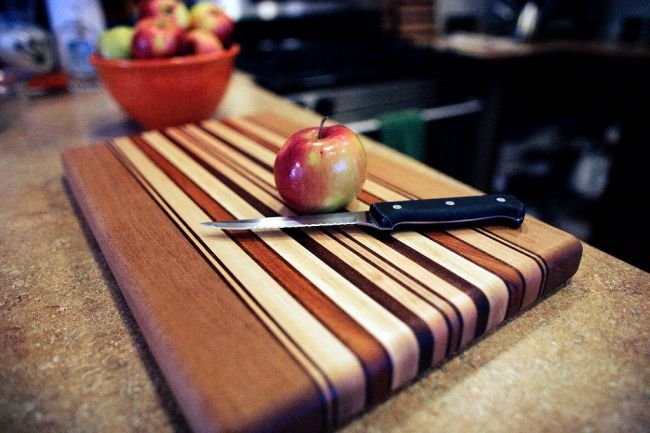According to a Lysol Cross-Contamination Study done in 2012, even the preparation of a single meal can contaminate 90 percent of the kitchen surfaces used for cooking. And this high degree of contamination is fueled by invisible germs, as opposed to detectable dirt. So, without further ado, let us check out 8 simple ways by which we can make our kitchens relatively germ-free – thus indirectly shielding our health from the unseen ‘enemy’.
1) Washing your hands with SOAP –

While this may seem to be a pedestrian advice, according to the aforementioned study, the action (or lack thereof) responsible for spreading the most amount of germs was found to be the improper washing of the cook’s hands. To that end, the study required some volunteers to make preparations out of meats and vegetables – and majority of them only rinsed their hands with water (and that too when soap was offered to them). So, as a counter-measure, always make sure to rinse your hand with soap.
2) A bacteria-free counter-top is the way to go –

While counter-tops pertain to the specific areas where you prepare all your delicacies ranging from cake batters to roast turkeys, the retention of bits and parts of such foods on the surface leads to the breeding ground for the lingering bacteria. So the way to go would be to disinfect the surface, as opposed to just wiping it with a cloth. This process should be done with disinfectants that are available in the market – with the preferred products being the ones that have the labels boasting of 99.9 percent germ and bacteria killing capacity.
3) Kitchen fabrics should also be disinfected –

In the previous entry, we fleetingly mentioned something about wiping. Such wiping actions are frequently done with rags and cloths that are only washed in water beforehand. But as with counter-tops, the fabrics should also be treated with disinfectants, and washed in warm water with temperatures of over 60 degrees Celsius. And, even after such procedures, the wiping cloths should be changed regularly. On the other hand, if you use sponges, you can keep a wet sponge inside a heated microwave for two minutes to eliminate most of the bacteria.
4) Cleaning the faucet filter is crucial –

The source of water required for cleaning and wiping the kitchen area obviously comes from your kitchen faucet. But the predicament in such a scenario is that the dirty rag (used for wiping), unclean water, and even food bits might regularly come in contact with the faucet. This can lead to the growth of innumerable bacteria and germs inside the faucet, which also has the tendency to have lime-scale invasions from effects of hard water. As a solution, one should regularly open up the faucet filter, and keep it soaked in vinegar for a night.
5) The sink deposits should also be removed –

Another potential breeding ground for bacteria and germs is the opening to the sink pipe through the sink. A tiny place where fish bits, meat bits and veggies come together shouldn’t be kept for long without completely removing the deposits. This is can be easily done by disinfecting the area with a small amount of bleaching solution. And, do make sure to repeat the process every time after you are done preparing with poultry items.
6) Keep separate cutlery and cutting boards for meats and veggies –

As the heading makes it quite clear – meats and veggies (and fruits) shouldn’t be diced and sliced on a singular cutting board. This precaution is obviously related to the swapping of bacteria between the meat and the organic plant products. The same precaution should be adopted for the cutting knives and other cutlery when dealing with these separate groups of food types.
7) Cutting boards require cleaning too –

A hot, soapy water is often not enough for the heavy duty cutting board. You might have to go the extra mile by making a home-brewed cleaning concoction of just one tablespoon of bleaching powder in 16 oz of water (also check this tutorial on how to make your own kitchen cleaning solutions). After rinsing the board with this solution, make sure to clean up the surface with warm water. And as for the boards themselves, a plastic or glass board is always more preferable to the wooden variety. And, even if you like your wooden variety, then also opt for a Microban treatment (atop the surface) – which is an anti-microbial compound.
8) Fridge compartments should be organized –

The primary dictum that should be followed when coming to fridges is – cooked food and raw ingredients should be kept separately (also check this tutorial on how to make your grocery food last longer). And of course, following this ‘rule’ is not enough. An ideal scenario would also entail cleaning the innards of your fridge for at least twice a month. This is can be done by removing the compartments and soaking them in warm water for around 20 minutes. And, while you are at it, also spray the inside of the fridge with disinfectants. Make sure to reach out to the crevices and the edges, which can be preferably achieved with simple toothbrushes armed with cleaners.




